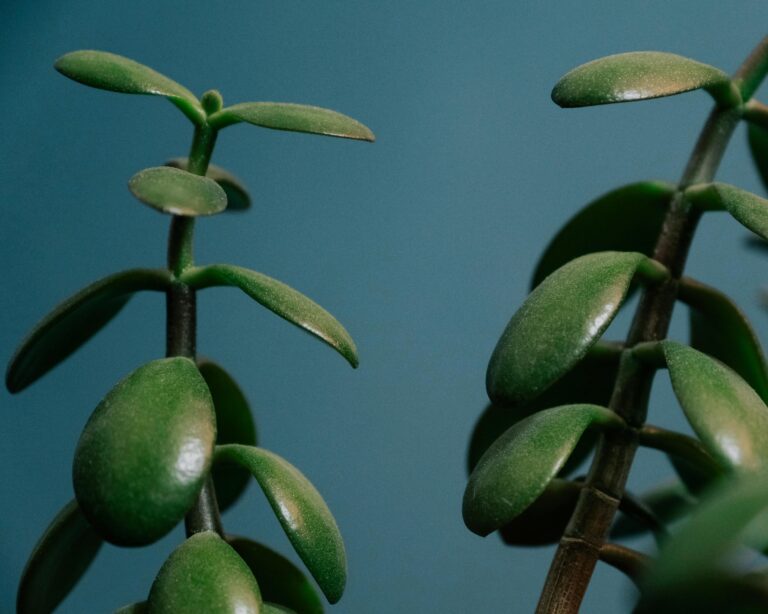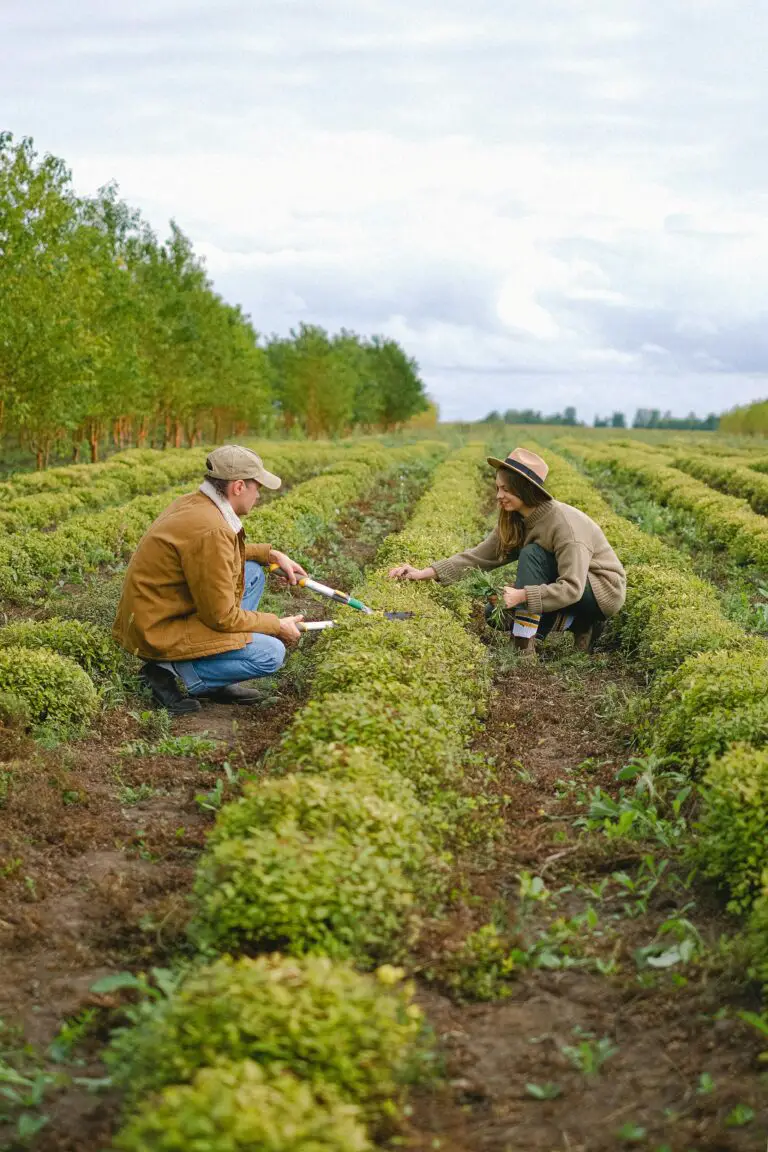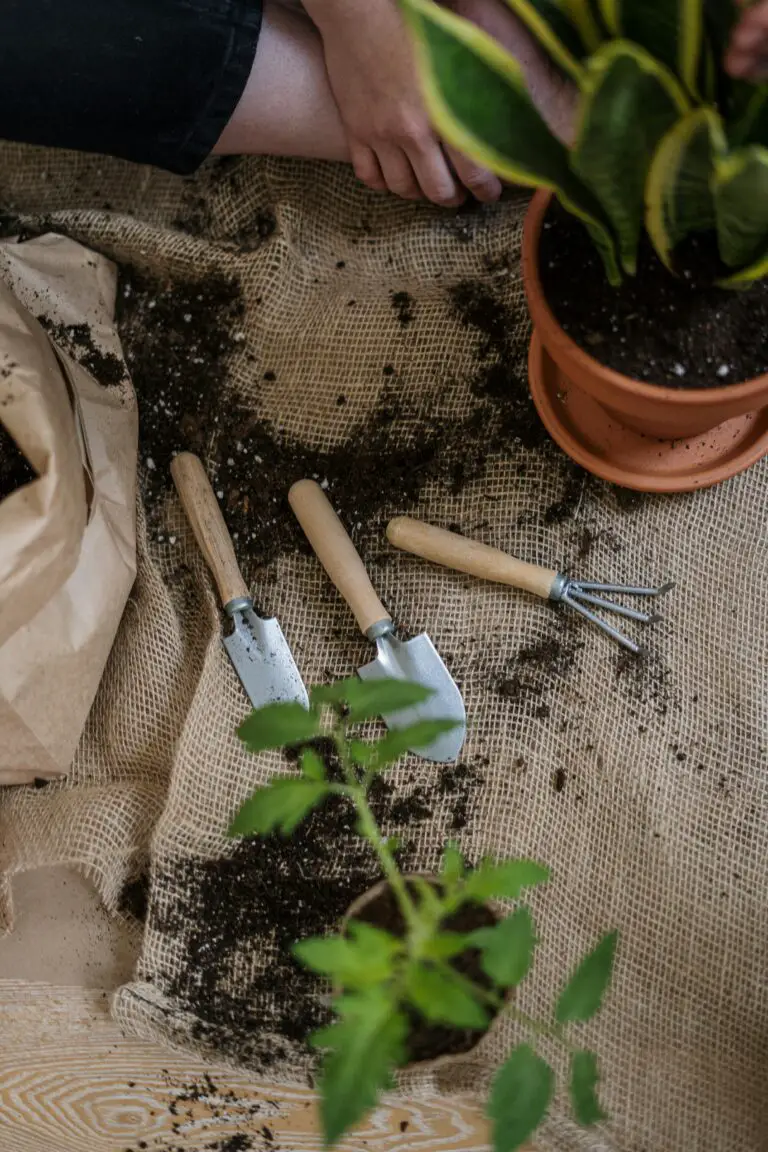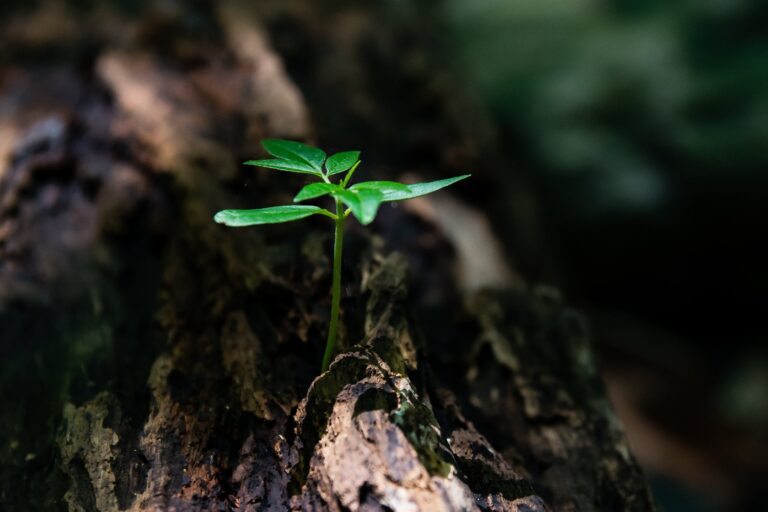Introduction to Crassula Plants
Welcome to the fascinating world of Crassula, a diverse group of plants that’s stealing the spotlight in the realm of houseplants. Whether you’re an avid plant collector or a budding green-thumbed enthusiast, understanding what sets these succulents apart is the first step to creating an indoor oasis teeming with resilience and charm.
Let’s look at the simplicity behind their allure. Crassula species are celebrated for their exceptional adaptability and sculptural beauty, which makes them an absolute joy to care for. Picture this: a friend gives you a Crassula ovata, commonly known as the Jade Plant. It’s small, yet full of life with waxy, deep green leaves. You place it on your windowsill, and before you know it, it seems to thrive on neglect, asking very little of you but offering a lush aesthetic in return.

Crassula’s popularity isn’t just about how easy they are to keep alive. It’s also the variety they offer—a symphony of shapes, from the stacks of coin-like leaves of Crassula perforata to the delicate rossetes of Crassula ‘Buddha’s Temple’. There’s genuinely a Crassula for every taste and space. What’s more, they’re not only adored for their cosmetic flexibility but also their amazing resilience. They can weather different environments – teaching us a thing or two about adapting and growing regardless of what life throws our way.
As we dig deeper into getting the best out of these succulents, we begin to understand why the right soil is so vital to their success. While caring for indoor succulents might seem intimidating, it’s these simple requirements that make Crassulas and their cousins hassle-free and gratifying houseplants. With so much diversity and longevity, it’s clear that bringing a Crassula into your home is more than just a decorative decision—it’s a nurturing experience that is as rewarding as it is stylish.
Understanding Soil Needs for Crassulas
Let’s dig a little deeper into the world of Crassula soil, quite literally! Imagine for a moment you’re crafting the perfect bed for a good night’s sleep. Now, think of your Crassula needing the same level of tender care for its roots to ensure it wakes up every day bright and perky. The right soil mix for a Crassula not only acts as a comfy bed but also its personal buffet of nutrients, and a great drainage system to boot.

Not all soil is created equal, especially where these succulent beauties are concerned. The ideal Crassula soil needs to strike a delicate balance between retaining just enough water to quench its thirst and draining excess moisture to fend off root rot—an unwelcome guest for any succulent enthusiast. It’s like walking a tightrope between a drought and a flood, where precision is key.
For inspiration on best practices, consider how Crassula Marginalis thrives with the right soil and care. Good drainage ties in closely with aeration; roots need breathing room, much like a diver needs oxygen. The nutrient provision is similar to a well-stocked pantry, ensuring your Crassula has access to all the goodies it needs to flourish.
Remember, a happy Crassula in harmonious soil is not just a dream—it’s an attainable reality with a sprinkle of knowledge and a dash of care. Dive into the content here to garner tips for a thriving Crassula haven, ensuring your green companion grows up strong, resilient, and Instagram-ready at any moment!
Key Characteristics of the Ideal Crassula Soil Mix
Imagine this: you’re a Crassula, a hardy and resilient succulent, looking to put down roots. What’s on your wishlist? Think about a gritty, breathable oasis that feels like the perfect pair of jeans—comfortable yet stylish, sturdy yet giving. That’s the kind of soil we’re aiming for! The ideal soil mix for Crassula plants isn’t just any old dirt; it’s a well-tailored environment that caters to your plant’s specific needs.
First off, let’s talk granularity. The soil you choose for your Crassula should be like the bed of a refreshing, clear stream—filled with coarse particles that allow water to flow freely. It’s all about providing excellent drainage to prevent waterlogging, which succulents despise as much as cats despise water. This granular structure serves another essential purpose: it’s roomy enough for roots to stretch out and strengthen as they seek moisture and nutrients.
Moving on to pH levels—Crassula’s preferred soil is as balanced as a gymnast on a beam. Aim for a pH that is neither too acidic nor too alkaline, with a sweet spot around the neutral range of 6.0 to 7.5. This perfect equilibrium allows for optimal nutrient uptake, ensuring your succulent gets its balanced diet of minerals without the risk of toxicities or deficiencies.
Finally, let’s not forget about the role of organic matter in the mix. While you might think a desert-born plant like Crassula would shun anything organic, a dash of nutrient-rich compost or peat moss can act like a multivitamin—boosting your plant’s health. This organic substance not only nourishes but also helps maintain moisture balance, which is key for those periods when the sun is more generous than the rainclouds.

In conclusion, if Crassula plants could speak, they’d tell you that soil matters—a lot! By keeping these traits in mind when mixing your soil, your Crassulas will thrive, and you’ll be rewarded with their lush, jade-green foliage that can make even the dullest corners of your home or garden beam with life.
Creating the Perfect Crassula Soil at Home
Do you want to be the architect of your crassula’s happiness? Rolling up your sleeves to create the ideal soil mix will not only be a fun DIY project but also the secret ingredient to your succulent’s success. Let’s dig into the foundations of a sublime soil mixture that will have your crassula shouting ‘thank you!’ from its terracotta rooftops.

Imagine you’re a gourmet chef, and your crassula is the star guest with a very specific palate. Now, the key to any good dish, or in our case, soil mix, lies in the quality and proportion of ingredients. We’ll begin with the base of our mix – sand. Picture beach sand, but instead of building sandcastles, we’re building a solid yet well-draining foundation for our plant’s roots.
Next, add a dash of perlite. If sand was the cake, then perlite is the baking powder, creating pockets of air that make the soil feel like it’s breathing. These airy spaces encourage roots to grow strong and prevent water logging, which is often the bane of succulent existence.
Finally, we mix in some organic matter – think of it as the seasoning that adds zest to the soil’s flavor. It could be compost or well-rotted manure, which not only provides nutrition but also enhances the soil’s water-retention abilities. A sprinkle of this, and we’re all set for my crassula to thrive!
The perfect crassula soil is a balancing act. Just like how a tightrope walker adjusts his pole, we tweak our soil mixture proportions. Too much sand, and our plant dries out, staring at us with a thirst only seen in desert mirages. Too much organic matter, and it’s like our crassula is trying to swim in a mud puddle. The sweet spot? A 1:1:1 ratio of sand, perlite, and organic matter, respectively, can make your crassula perform a happy dance.
Remember, your crassula’s home should not be a swamp or a desert, but a miniature oasis where it can lay its roots in comfort. A well-prepared soil mix is like a fluffy down comforter for your crassula’s roots, keeping them cozy, aerated, and just moist enough to feel like they’re at spa day, every day.
Top Commercial Soil Mixes for Crassula
Embarking on the quest for the perfect bedding for your succulents might seem daunting, but fear not! Crassula, those plump-leaved beauties, will thank you with vigorous growth and vibrant health when nestled in the right mix. Let’s delve into the world of commercial soil blends that hit the mark for these succulent superstars.
Take a peek at the Bountiful Cactus Combo, a soil mix that’s been the talk of the town amongst Crassula connoisseurs. Why, you ask? It’s all about balance — fluffy enough to allow air to the roots but sturdy enough to support your plant’s weight. Imagine the joy of witnessing your Crassula thrive, unaffected by the overwatering mishaps that haunt the dreams of succulent owners everywhere.
Next on the spotlight is Succulent Sanctuary Supreme. It’s as if this soil was tailored for Crassula’s unique requirements. Enriched with nutrients, this blend is akin to a gourmet feast for your plant, ensuring it receives all the essentials without any fuss. Picture your Crassula, perky and lively, just like the striking specimens showcased at prestigious botanical gardens.
Don’t overlook the Desert Dweller’s Delight, a favorite for the on-the-go gardener. This premixed soil has a well-deserved reputation for convenience without skimping on quality. Even if life keeps you busy, this soil ensures your Crassula doesn’t pay the price. Envision coming home to a flourishing, jade-green companion, ready to salute you after a bustling day.
Perhaps you’ve seen videos of Crassulas being repotted in luscious, well-draining soil and felt a pang of envy? Now it’s your turn to be the source of admiration. Check out this insightful video on repotting a Jade Plant into better soil, packed with tips and tricks that you can apply to your own Crassula:
Choosing any of these top commercial soil mixes is akin to giving your Crassula a first-class ticket to optimum health. Remember, a happy Crassula is one that’s rooted in the best of the best, so invest wisely in its growth medium. While we can’t promise that you’ll never encounter a gardening hiccup, we’re confident that with these soil mixes, you’re laying the groundwork for resounding success in the realm of Crassula care.
Watering and Fertilizing: Complements to Soil Health
Think of the Crassula plant like an artist, and the soil, water and nutrients as its palette. Without the right balance, the masterpiece—which is your succulent’s health—simply can’t come to life. It’s not just about what soil for Crassula, but about how you complement it with watering and fertilizing practices.

Imagine watering your Crassula with the same random enthusiasm you’d use to splash in a puddle. Sound fun? Maybe, but it’s a surefire way to drown your plant’s roots and wash away good intentions alongside soil nutrients. Here’s the deal: Crassula plants store water in their leaves, rendering them drought-tolerant. They need a watering routine that imitates a desert downpour followed by sunshine – saturate completely, then allow the soil to dry out completely before the next watering session.
The Art of Fertilization
The right fertilization is like a spice mix that brings a dish to life—it should enhance, not overpower. Crassula species aren’t high-maintenance divas when it comes to their diet. They require a fertilizer that’s low in nitrogen to avoid leggy growth and one that’s richer in phosphorus and potassium to encourage blooms and sturdy leaf development. Applying a succulent-specific fertilizer during the growing season, sparingly and diluted, is akin to serving a gourmet meal—it encourages flourishing growth without extravagance.
Let’s paint a real-life picture. Sally, an avid succulent lover, never misses a beat when it comes to her Crassula’s watering schedule. She imagines her Crassula as a camel, thriving in arid conditions and only drinking when water is absolutely necessary. With a disciplined hand, she fertilizes her ‘Jade Plant’ sparingly with a half-strength concoction perfectly brewed for succulent vitality. Her Crassula stands proudly, a testament to what can be achieved with the right care.
Mastering the delicate balance between soil, water, and nutrients doesn’t require a green thumb, just the right knowledge and a touch of dedication. Keep it simple, stay observant, and you’ll have a Crassula that’s not just surviving, but thriving with vibrance and vigor!
Troubleshooting Common Soil-Related Issues in Crassula
Crassula, those charming succulents we all adore, can face a real setback when pitted against an unsuitable soil environment. It’s like planting a palm tree in the arctic—though less dramatic, still quite inappropriate! To ensure these succulents flourish, let’s dig into some soil sleuthing and unearth the root of common soil-related grievances.
If you’ve found your Crassula looking less than perky, root rot could be the culprit. This soggy situation often occurs when the soil is too heavy or retains water like a sponge. Remember, Crassula plants prefer their roots to be on the drier side, much like they would experience in their native habitat. Root rot hits sneakily beneath the surface, so by the time you spot your plant’s leaves yellowing and wilting, it’s a race against time to save your green buddy.

Nutrient deficiencies can be another thorn in the side of Crassula owners. It’s a tricky balancing act—these succulents aren’t greedy feeders, but they do need their fair share of nutrients to thrive. A sign that your soil might be nutrient-deficient? A Crassula that’s looking as pale as a ghost and as thin as a rake. This is a clear call that your plant is starving for some well-balanced meals—think of it as switching from fast food to a diet rich in vitamins and minerals.
Pest infestations are yet another stumbling block on the path to a healthy Crassula. Those tiny invaders, such as mealybugs or spider mites, are like uninvited guests crashing your plant’s party. They draw the life out of your Crassula, leaving the plant stressed and vulnerable. If you notice tiny webs or sticky residues, it’s time to play detective and hunt down these minuscule marauders.
Of course, the best medicine is prevention. A proactive approach to soil care includes choosing the right type of soil—one that’s well-draining and mimics the porous, rocky ground these plants have adapted to. Regular inspections for signs of trouble, along with giving your plant the occasional ‘soil check-up’, can go a long way in preventing these issues. With some attentiveness and the correct care, you and your Crassula can enjoy a long and healthy life together, free from the woes of wayward soils.
Frequently Asked Questions
Are you curious about the best practices for your Crassula’s soil needs? Let’s dig into some of the most common queries that plant enthusiasts have when cultivating these succulent beauties. From repotting routines to signs that your soil is underperforming, we’ll cover the essentials of soil care for Crassulas.
How Often Should I Repot My Crassula?
Repotting is like a spa day for your Crassula; it’s essential but not too frequent. Imagine wearing the same pair of shoes for years – uncomfortable, right? That’s how your plant feels in old soil. Aim to repot every 2-3 years, or when you notice your plant has outgrown its current pot. It’s like giving your Crassula a roomier home to stretch its roots.
What Are the Signs of Poor Soil Health for My Crassula?
If your Crassula could talk, it would tell you when the soil goes bad. Since it can’t, keep an eye out for signs like water that sits on top of the soil instead of soaking in, or if your plant seems to be stuck in a growth rut. These are SOS signals that your soil might need a makeover.
Should I Use Organic or Inorganic Amendments for Crassula Soil?
Think of soil amendments as the vitamins for your plant’s diet. Organic choices, like compost or worm castings, are like home-cooked meals – full of nutrients and goodness. Inorganic options, such as perlite or pumice, keep the soil well-draining and aerated, like making sure you have enough fiber in your diet. It’s all about balance!
Watch this video for a visual guide on how to take care of your Crassula’s soil!
Remember, your Crassula isn’t just a static decoration; it’s a living, breathing organism that relies on you for its well-being. Treat its soil like a nurturing foundation, and you’ll see your Crassula thrive.



